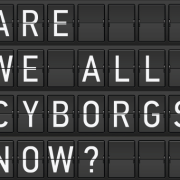Nicholas Carr, author of The Shallows: What the Internet is Doing to Our Brains, has an interesting post on his blog about the difference between situational overload and ambient overload. Failure to distinguish between these two types of phenomenon has led to great confusion about the nature of information overload.
Situational overload is what we might call the needle-in-the-haystack problem. This kind of overload exists when we can’t find the needle because of all the hay. Carr believes that this kind of overload is not actually a problem in today’s world. The real problem is ambient overload, and it arises precisely from the mechanisms we’ve created to avoid situational overload. As Carr explains:
Situational overload is not the problem. When we complain about information overload, what we’re usually complaining about is ambient overload. This is an altogether different beast. Ambient overload doesn’t involve needles in haystacks. It involves haystack-sized piles of needles. We experience ambient overload when we’re surrounded by so much information that is of immediate interest to us that we feel overwhelmed by the neverending pressure of trying to keep up with it all. We keep clicking links, keep hitting the refresh key, keep opening new tabs, keep checking email in-boxes and RSS feeds, keep scanning Amazon and Netflix recommendations – and yet the pile of interesting information never shrinks.
The cause of situational overload is too much noise. The cause of ambient overload is too much signal.
The great power of modern digital filters lies in their ability to make information that is of inherent interest to us immediately visible to us. The information may take the form of personal messages or updates from friends or colleagues, broadcast messages from experts or celebrities whose opinions or observations we value, headlines and stories from writers or publications we like, alerts about the availability of various other sorts of content on favorite subjects, or suggestions from recommendation engines – but it all shares the quality of being tailored to our particular interests. It’s all needles. And modern filters don’t just organize that information for us; they push the information at us as alerts, updates, streams. We tend to point to spam as an example of information overload. But spam is just an annoyance. The real source of information overload, at least of the ambient sort, is the stuff we like, the stuff we want. And as filters get better, that’s exactly the stuff we get more of.
It’s a mistake, in short, to assume that as filters improve they have the effect of reducing the information we have to look at. As today’s filters improve, they expand the information we feel compelled to take notice of. Yes, they winnow out the uninteresting stuff (imperfectly), but they deliver a vastly greater supply of interesting stuff. And precisely because the information is of interest to us, we feel pressure to attend to it. As a result, our sense of overload increases. This is not an indictment of modern filters. They’re doing precisely what we want them to do: find interesting information and make it visible to us. But it does mean that if we believe that improving the workings of filters will save us from information overload, we’re going to be very disappointed. The technology that creates the problem is not going to make the problem go away. If you really want a respite from information overload, pray for filter failure.
Bottom line: When the amount of information available to be filtered is effectively unlimited, as is the case on the Net, then every improvement in the quality of filters will make information overload worse.
Further Reading


